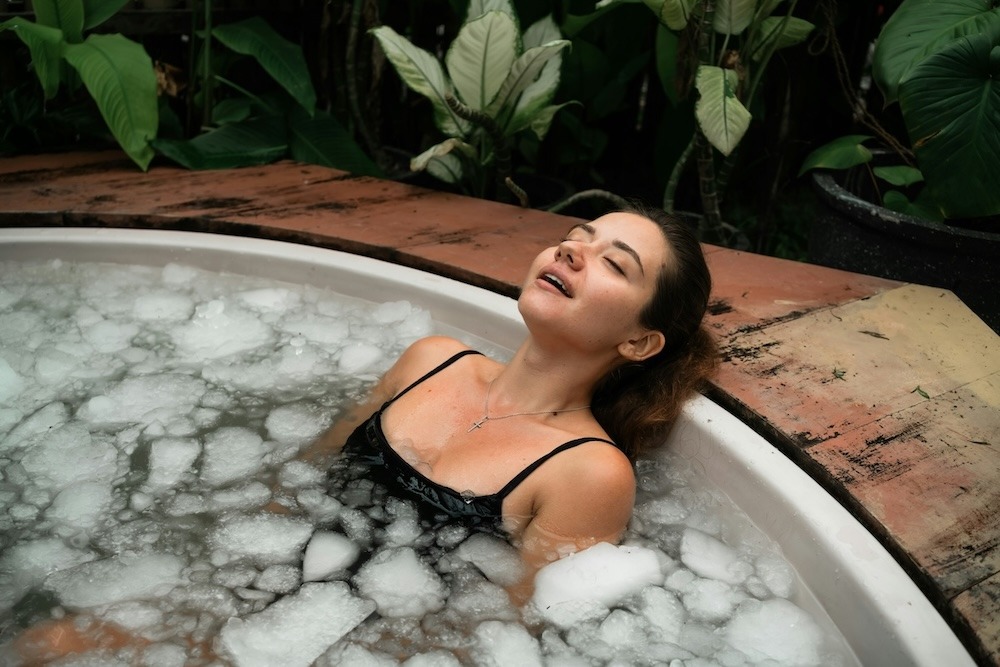Cold Plunge for Women: Benefits, Risks, and What to Know Before You Dip
4 minute read
Cold plunging for women is having a moment. From biohackers to yoga moms, everyone’s dipping into freezing water for health benefits. But for women, there are some unique considerations. Hormones, cycles, and safety all play a role. So, should women be plunging too? Let’s break it down.
❄️ The Benefits for Women
Yes, women absolutely benefit from cold exposure. Here’s how:
-
Reduces inflammation
Cold plunging can decrease systemic inflammation, which may help with autoimmune conditions, bloating, and sore muscles. -
Boosts mood
Cold exposure activates norepinephrine and dopamine, helping with anxiety and symptoms of depression [1]. -
Supports hormones
Some women report fewer PMS symptoms and reduced hot flashes during menopause with regular plunging. -
Strengthens immunity
Consistent cold exposure may improve your body’s ability to fight off illness [2].
Let’s not forget the natural energy boost that comes without caffeine.
⚠️ When Women Should Be Cautious or Avoid Plunging
Cold plunging isn’t for every woman or every season of life. Here’s when to be mindful:
-
During menstruation
Some women feel better after a plunge, especially if they have cramps. Others feel worse. This depends on your body and how sensitive you are during your cycle. -
During pregnancy
There isn’t enough research on cold plunging during pregnancy. Most healthcare providers advise against it, especially in the first trimester. -
After childbirth
The body needs time to recover. Wait until your provider gives the green light before returning to any intense temperature shifts. -
With heart or vascular conditions
Cold exposure increases blood pressure and heart rate. If you have a cardiovascular condition, talk to your doctor first. -
If you have Raynaud’s syndrome or cold urticaria
Plunging can trigger painful or dangerous reactions in these cases. Always err on the side of safety.

🧬 How Women Respond Differently Than Men
The physiological process is similar for everyone. Blood vessels constrict, dopamine spikes, and brown fat gets activated. But for women, certain differences show up:
-
More sensitive to temperature changes
Estrogen can heighten sensitivity to both cold and heat. -
Different fat distribution
Women usually carry more subcutaneous fat. This can provide slight insulation and sometimes makes the cold feel less painful. -
Cycle phase matters
In the luteal phase (the second half of the cycle), the body tends to run warmer. Cold plunges may feel more intense or uncomfortable during this time.
A 2021 study found that women often have a lower cold tolerance than men due to hormonal shifts and slower metabolic heat production [3].
🧊 When Cold Plunging Might Help Women the Most
Cold plunging can be especially helpful for women who:
-
Are in perimenopause or menopause and experiencing mood swings, hot flashes, or poor sleep
-
Feel overwhelmed, anxious, or burned out
-
Exercise frequently and need recovery support
-
Want a natural dopamine hit to replace sugar, caffeine, or wine
Start small. Thirty to ninety seconds is plenty for beginners. Focus on how it feels and build gradually.
👙 Tips for a Safe and Empowering Plunge
-
Ease in with cold showers
These are great for training your nervous system. -
Track how you feel during different phases of your cycle
Not every day will feel the same. -
Plunge with a buddy or professional
Cold shock is real. Never plunge alone until you know your limits. -
Warm up slowly
Skip the hot sauna right after. Use a towel and move around first. -
Respect your body
Some days it’s a yes. Other days it’s a no. Both are valid.
🔬 A Few Studies to Know
Cold plunging can be powerful and deeply grounding for women. It helps regulate stress, improves energy, and may offer support during hormonal transitions. The key is to listen to your body, be consistent, and approach each plunge with intention.

